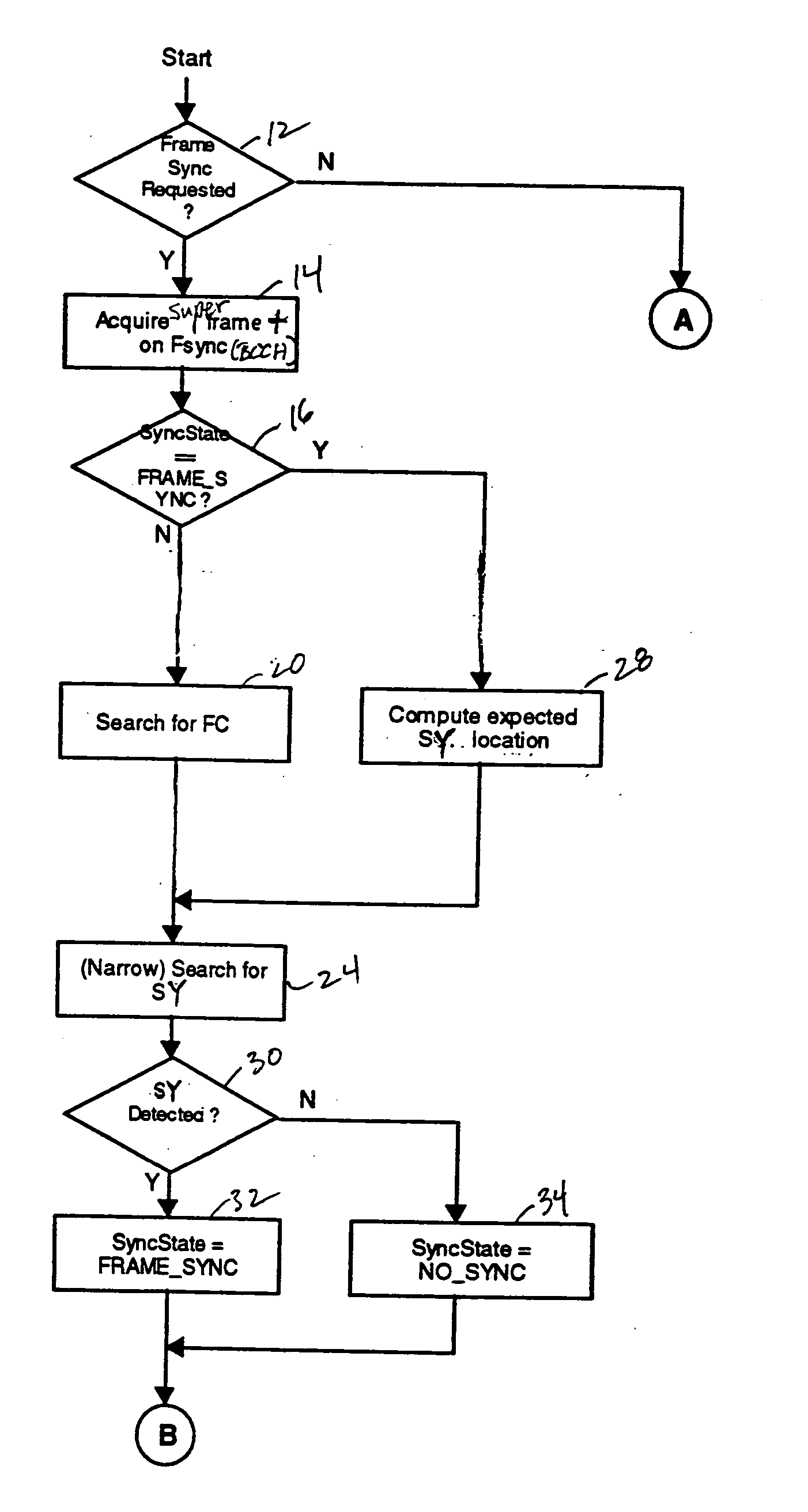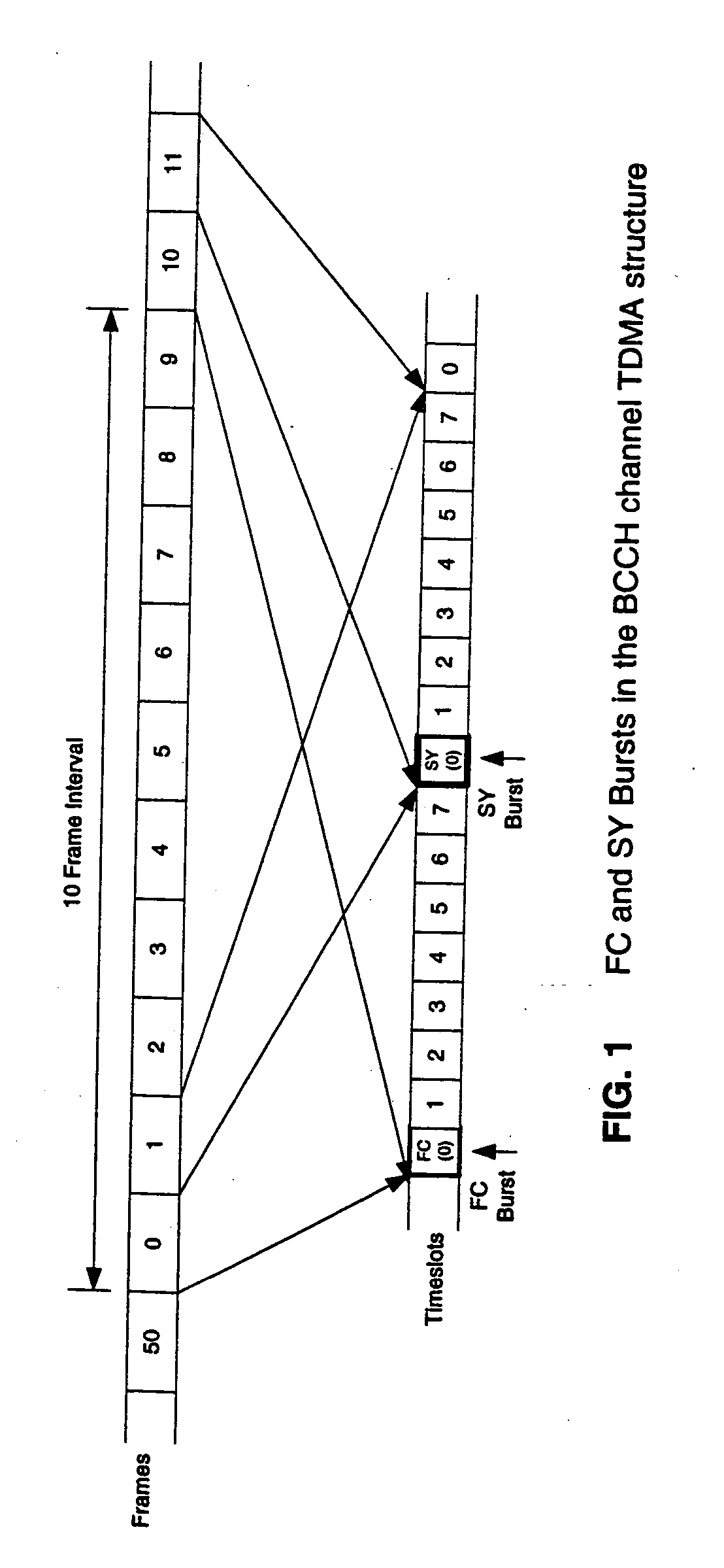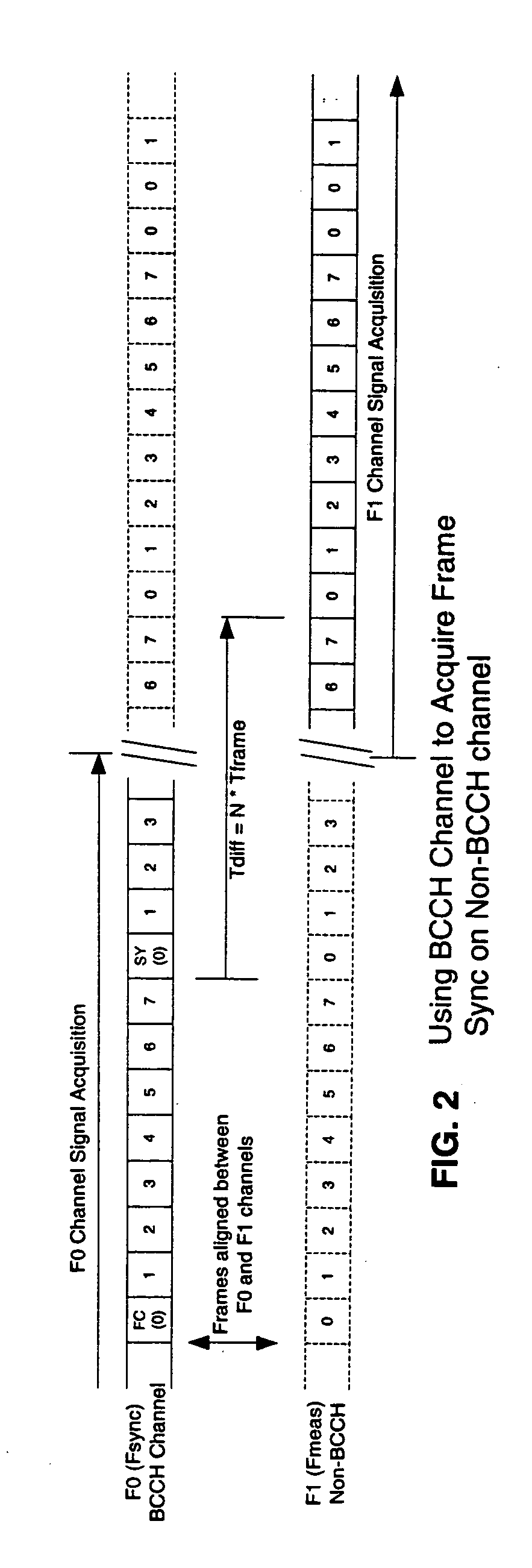Synchronizing to GSM RF downlink signal frame timing
- Summary
- Abstract
- Description
- Claims
- Application Information
AI Technical Summary
Benefits of technology
Problems solved by technology
Method used
Image
Examples
Embodiment Construction
[0011] GSM frame synchronization involves sequentially detecting two special types of bursts transmitted in consecutive slot 0s of a broadcast control channel (BCCH) frame structure. The frame structure is described in the GSM system specification, 3GPP TS 05.01, incorporated herein by reference, and illustrated by FIG. 1 where a ten frame “superframe” structure is shown. Frames 0 and 1 of each superframe have a frequency correction (FC) burst and a synchronization (SY) burst in respective slot 0s. To obtain frame synchronization a receiver first detects the FC burst from a continuous sample data record, which gives a “coarse” location of the frame structure as well as providing a carrier frequency offset estimate—see co-pending U.S. patent application Ser. No. 10 / 734,407, incorporated herein by reference. Using the FC location information, the receiver then computes a location for the SY burst and searches a limited time range about the computed location for the SY burst, which giv...
PUM
 Login to View More
Login to View More Abstract
Description
Claims
Application Information
 Login to View More
Login to View More - R&D
- Intellectual Property
- Life Sciences
- Materials
- Tech Scout
- Unparalleled Data Quality
- Higher Quality Content
- 60% Fewer Hallucinations
Browse by: Latest US Patents, China's latest patents, Technical Efficacy Thesaurus, Application Domain, Technology Topic, Popular Technical Reports.
© 2025 PatSnap. All rights reserved.Legal|Privacy policy|Modern Slavery Act Transparency Statement|Sitemap|About US| Contact US: help@patsnap.com



